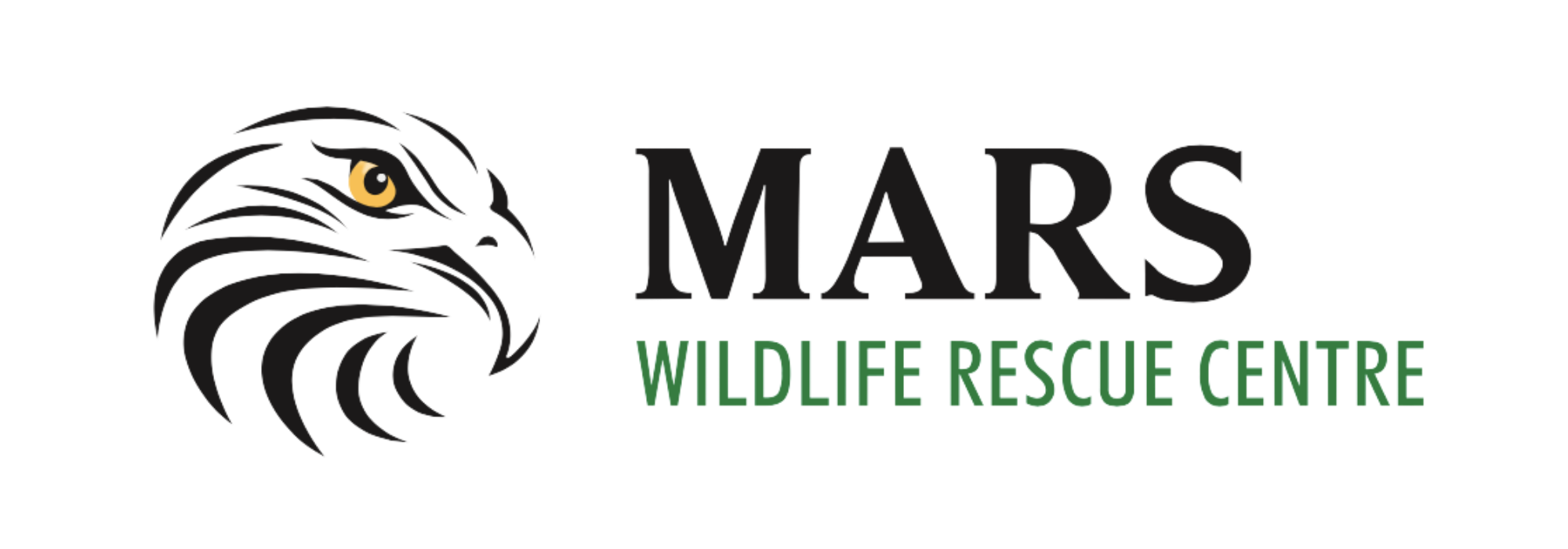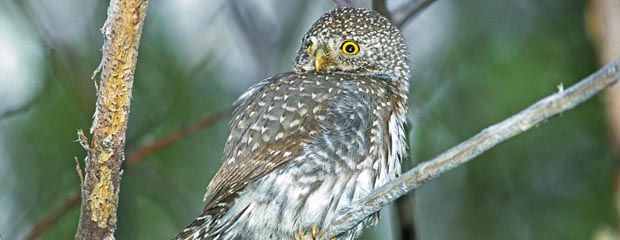by Sandy Fairfield, MARS Education Coordinator
Over the years, Mountainaire Avian Rescue Society (MARS) have been involved in a variety of scientific studies related to local species including banding hummingbirds, West Nile Virus, poisoned eagles and Trumpeter swans.
In February, 2010, the Ministry of Environment, together with Pacific Northwest Raptors in Duncan, and MARS launched a new pilot project on the release of juvenile pygmy owls into the wild after time spent in rehabilitation, and the feasibility of radio tracking the owls on Vancouver Island.
The pygmy owl is Canada’s smallest owl standing a mere fifteen centimetres tall.There are four sub-species of pygmy owls and the local one is the “Swarthi” species These little owls are ferocious daytime hunters, which makes them a perfect species to track. Perfectly camouflaged to fit in with their habitat that includes mixed forestland with nearby open fields or farmlands, they also have a unique feather pattern on the back of the head that resembles a pair of eyes, much like some butterflies and fish.
Although there have been previous studies conducted on adult pygmy owls none have been on juvenile birds. There is very sparse knowledge of their general biology including nesting success, longevity, survival, and range.
Why is this study important? It is hoped the information collected will provide a greater understanding of the pygmy owls’ habitat requirements, as well as feeding and reproduction habits. In order to make this study work it was necessary to use telemetry to track the health, activity and movement of the owls.
Four owls were used for this study – all were juveniles, two males and two females, that had been separated from their parents. The two owls in the Courtenay area had been in the wild hunting on their own; the Duncan pair were rescued as owlets and had not been exposed to the wild.
Three different options were explored to attach the transmitters to the body. The one that was chosen was a specially designed “back pack” which fitted around the body under the wings holding the transmitter in place along the owl’s back. The apparatus could only weigh 3 per cent of the total body weight and be the least invasive and efficient design.
Trials were conducted at MARS and in Duncan to help the owls get used to flight with the “back-packs” during which time they were closely monitored; unfortunately one of our little owls it did not make it to the field study after escaping through a tiny hole in pursuit of a mouse, and ending up with three recovering eagles.
In mid-September the Duncan owls were released at an elevation of approximately four hundred meters, but they promptly headed for lower ground, unfortunately both were predated upon within the first week. They were collected and will provide feathers for blood and DNA samples.
The Courtenay Owl was released in the Trent River area of Royston and was successfully tracked for 3 weeks.
As published in the Comox Valley Naturalist Society newsletter, February, 2011.

